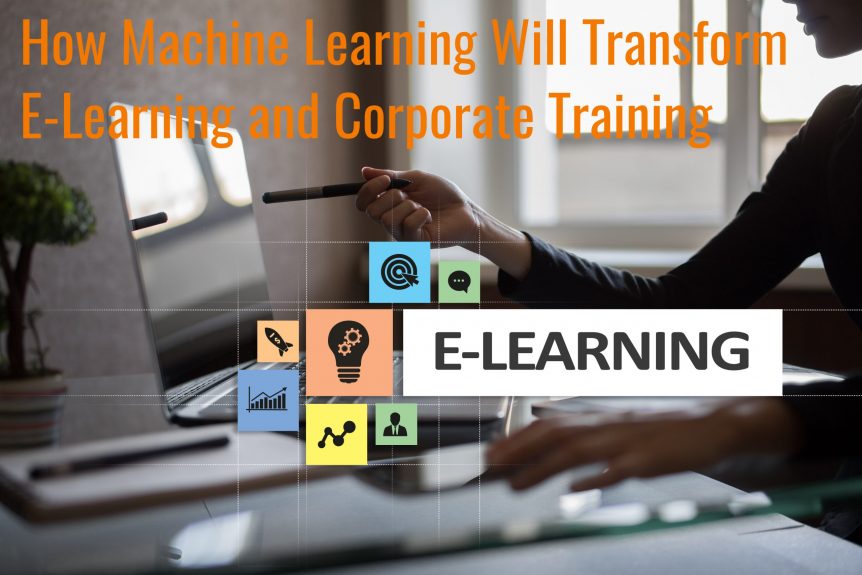How Machine Learning Will Transform E-Learning and Corporate Training
E-learning is a training tool that is continuously evolving to improve outcomes and make training strategies more effective in organisations across the UAE and Saudi Arabia. One new technology that is set to become a key component of many e-learning courses is machine learning.
Machine learning can be applied to e-learning courses and corporate training strategies in a number of ways. Before looking at how machine learning can be used in training, let’s first define the technology.
What is Machine Learning?
Machine learning is a technology that comes under the Artificial Intelligence (AI) umbrella. In other words, machine learning is a form of AI.
It is a tool that can take many forms, but there is a crucial similarity – e-learning systems learn and improve over time. Those new learnings and improvements are not programmed, however. They happen automatically, without human intervention.
You have probably encountered machine learning in a range of applications, often without even knowing it. One of the most common is Google search, which uses machine learning tools to decide the websites to display on a search results page. Social media platforms like Facebook and LinkedIn also use machine learning when displaying content on your feed, while apps like Netflix use machine learning to display movies and programmes you might like to watch.
In all these examples, the machine learning system learns as it goes along, constantly looking for ways to improve.
How Machine Learning Will Transform E-Learning
The reality is that we are only at the beginning of the machine learning journey, particularly in terms of e-learning and the training industry. In fact, there are probably applications that will become commonplace in the years to come which we can’t yet imagine.
That said, there are some applications of machine learning we can explore. The technology exists for some of them today, while advances in the future will make others available.
Personalised Training Paths
Personalisation is a feature of many e-learning courses today, but those paths are often still linear. For example, you present the learner with a choice between path A and path B. Once on the selected path, though, there is little if any deviation.
Machine learning can turn this on its head by delivering personalised e-learning content that, in theory, has an infinite number of paths. The goal is to present an individual learner with the right content at the right time. Some examples of how it could work include:
- The system can learn about the individual as they progress through various e-learning courses. This system will then develop an understanding of how the individual learns, the things they are good at, and the things they are not so good at. It can then personalise a training path accordingly.
- Another option is where the machine learning system has no prior knowledge of individual learners. However, as each person progresses through a new e-learning course, it will learn how to present the information to achieve the best outcomes. For example, it could learn which parts of the e-learning course are proving to be the trickiest for the largest number of learners, adjusting its approach accordingly.
- A final example is a tool that learns and adapts based on real-time signals from learners. This is another example of machine learning where the system has no prior knowledge of the learner. Instead, it reads signals from learners and learns what they mean. For example, the system might identify that a batch of text is taking longer to read than would be expected, indicating the text could be simplified or improved.
Natural Language Processing
Natural language processing (NLP) is something most of us have encountered, whether it is asking a personal assistant on our phone about the weather or asking our car to show us directions to where we need to go. In brief, NLP involves a system learning how we speak so it can understand what we are saying.
This creates the potential for e-learning courses that learners interact with through their voice rather than through taps, swipes, and clicks.
Chatbots as Virtual Tutors
Not all chatbots use machine learning, but it is possible to build machine learning into a chatbot application. Plus, the technology is improving all the time. Specifically, chatbots are getting better at having natural conversations with people and providing them with useful information and assistance.
This opens up the potential for virtual tutors in e-learning courses, where learners can ask questions and interact with a chatbot rather than sending an email to a person.
Training Strategy Development
Machine learning also has the potential to improve corporate training strategies. We can look to manufacturing industries and predictive maintenance as a potential example.
With predictive maintenance, machine learning tools predict when a part or component in a machine is going to fail so that maintenance work can be scheduled before that happens.
If we transfer this concept to training, machine learning tools could be developed that can predict skills shortfalls and other training gaps in an organisation before they become problematic. This would facilitate the creation of new e-learning content at an optimum time, rather than the process being reactionary.
Potential for Success
Not everything in relation to machine learning is rosy, as problems do exist. The technology is still in its infancy for a start. Also, one of the most discussed topics in machine learning at the moment is bias, where machine learning systems often learn in a biased way. This results in them treating people differently based on, for example, gender or skin colour. Even with the best intentions, these biases can creep in.
While there is a way to go for machine learning, the opportunities it potentially offers for e-learning and corporate training are exciting. Watch this space.
